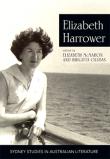Abstract
'When I first read The Long Prospect (1958) some thirty years ago, what impressed me was the expressivity of Harrower’s writing, its power in capturing the drama and surge of emotion. It strikes you immediately, in the first pages of the novel, which have the formidable and oppressive grandmother Lilian intruding into the flat of her one-time boarder, the young scientist Thea, with “her eyes on swivels” – and not just her eyes working overtime, but her eyebrows too, “one ironic eyebrow cocked and ready to greet Thea”, and “one drooping disdainfully”. 1 As so often in Harrower, the drama of emotion is played out in the face – the characters constantly scan each other’s faces, they twist incredulously or curve maliciously, they beam with admiration or are bleached with dismay. Their mouths are similarly expressive – close-lipped with resolution, quivering with anger, clamped shut with rage. They exhibit several different kinds of laughter, smiles, grins and giggles – most of them fairly chilling. And then of course the eyes – cold, downcast, brightly sullen, wild with accusation or fixed with tension, “frank and yet guarded” (125). Within moments of her intrusion into the younger woman’s flat, Lilian’s face and indeed the nervous, endlessly mobile dispositions of her body in the confined space, have registered a whole parade of emotions: disdain, resentment, disapproval, wonder, disappointment, incredulity, anger, excitement, annoyance, jealousy, awe and derision.' (Introduction)



